The psoas muscle, often referred to as the body’s “core muscle,” is a deep, powerful muscle that connects the lower spine to the femur (thigh bone). Located deep in the abdomen, it plays a crucial role in several functions, such as hip flexion, standing, walking, and running. Because of its location and importance, a tight psoas can significantly affect your posture and movement.
Moreover, the iliopsoas tendon [1] can cause pain and snapping in some people. A psoas release stretch (or lengthening) helps reduce this tension, especially when the iliopsoas tendon causes symptoms such as snapping hip syndrome.
Understanding the Psoas: Not the “Devil” You Think It Is
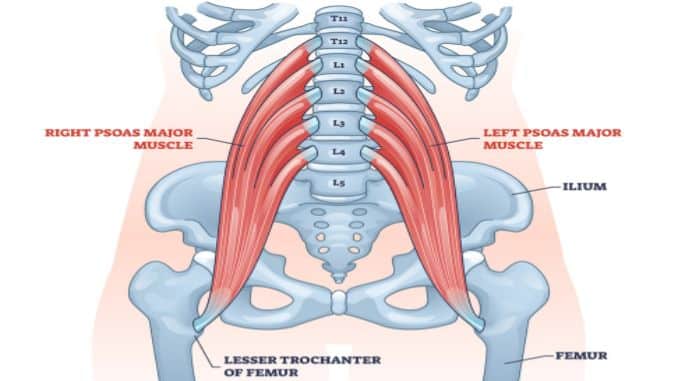
The psoas muscle is often misunderstood and blamed for issues like poor squatting, back pain, and sciatica. However, it’s not as sinister as it seems. When weak or inhibited, the psoas can cause overuse of other muscles, like the rectus femoris, leading to knee pain and tightness.
Fitness expert Mark Young recommends:
- Foam rolling the Rectus Femoris: This helps relieve muscle tightness and improve tissue mobility.
- Activating the Psoas: Use resistance bands to pull the knee toward the chest, which also helps properly engage and strengthen the psoas.
By focusing on the psoas, many individuals experience immediate relief from knee pain and muscle imbalances.
Why is the Psoas Important?
- It can become tense in response to physical or emotional stress, sometimes contributing to muscle tightness [2]
- It reacts to stress and emotions, often tensing up in response to fear or trauma.
- Moreover, when it’s tense, it can cause back pain, poor posture, and other issues. A psoas release stretch can help relieve this built-up tension and then restore function.
The psoas muscle [3], along with the erector spinae muscles, shows changes in size and density with aging. Aging affects muscle density, and this was observed in such people.
This is why regular stretching and strengthening of these muscles is important to maintain flexibility, prevent stiffness, and support better posture and mobility as we age.
Psoas Muscle Stretches
According to Dr. Rowe, a simple way to release psoas muscle tightness is by using a stretch that targets the hip flexors and the front of the thighs.
1. Hip Flexor Stretch

- Begin in an upright standing position with your feet shoulder-width apart.
- Then, step your right leg forward into a lunge position, bending your right knee forward while keeping your left leg straight behind you.
- Gently lower your left knee toward the floor, ensuring your hips are facing forward and your left leg remains extended behind you.
- Moreover, you should feel a stretch in your left hip flexor.
- Make sure your left hip is aligned and your core is engaged to support your back.
- Hold this position for several deep breaths, in through your nose and out through your mouth.
- After holding the stretch, switch legs, stepping the left leg forward, and gently lowering the right knee towards the floor.
- Repeat the movement on the opposite side.
2. Pigeon Pose Stretch
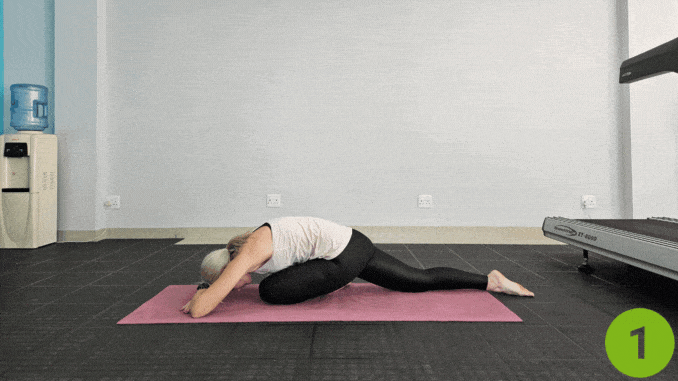
- Move into a straight-arm plank position, maintaining good alignment with your head, shoulders, hips, and toes.
- Bend one leg in front of your body, bringing your knee up to your elbow and your ankle against your hip on the opposite shoulder.
- Slowly walk your hands out before you, bringing your upper body to rest over your bent knee and your head facing the floor.
- Hold this position for 20 to 30 seconds.
- Take several deep belly breaths, in through your nose and out through your mouth.
- Raise yourself back up to return to the starting position and repeat the movement on the opposite side.
3. Bridge Pose
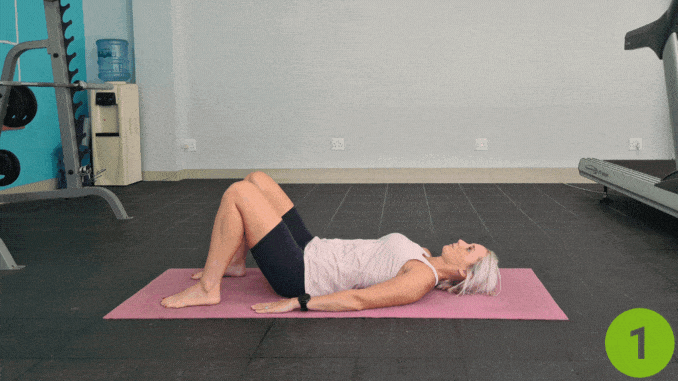
- Lie on your back on the floor with your knees bent and feet flat on the floor.
- Rest your arms on the floor alongside your body, palms facing down.
- Contract your core and press through your heels to lift your hips towards the ceiling, forming a straight line from your knees to your shoulders.
- Hold the position briefly, then slowly lower your hips back to the starting position.
4. Side-Lying Leg Raise

- Start by lying on your side with your arm bent on the floor, supporting your upper body.
- Bend your knees with your ankles in line with your hips.
- Tighten your core. Lift your leg towards the ceiling.
- Lower your leg and repeat the movement on the opposite side.
5. Cat-Cow Stretch
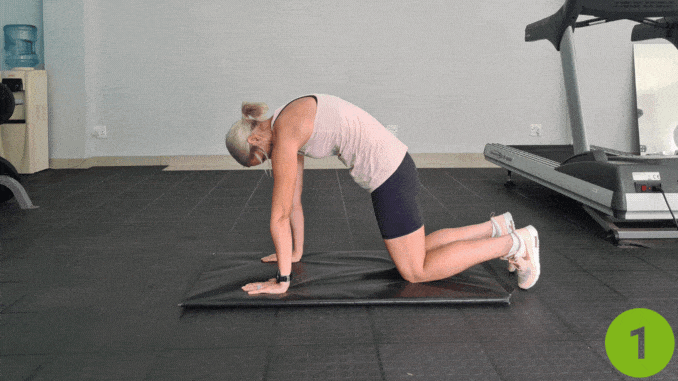
- Begin in a 4-point position with your hands beneath your shoulders and your knees under your hips.
- Then, inhale and contract your abdominal area.
- Exhale and slowly round out your mid-back as you drop your head downward.
- Moreover, then alternate by inhaling as you slowly lift your head and arch your mid-back.
- Repeat the movement, alternating directions.
6. Seated Butterfly Stretch

- Begin in an upright sitting position on a pillow, while maintaining good alignment of your head, shoulders, and hips.
- Then, engage your core. Bring your knees out to the sides and bring the soles of your feet together.
- Place both hands on your knees and close your eyes.
- Moreover, hold the position for several deep belly breaths, in through your nose and out through your mouth.
7. Lunge With Overhead Reach
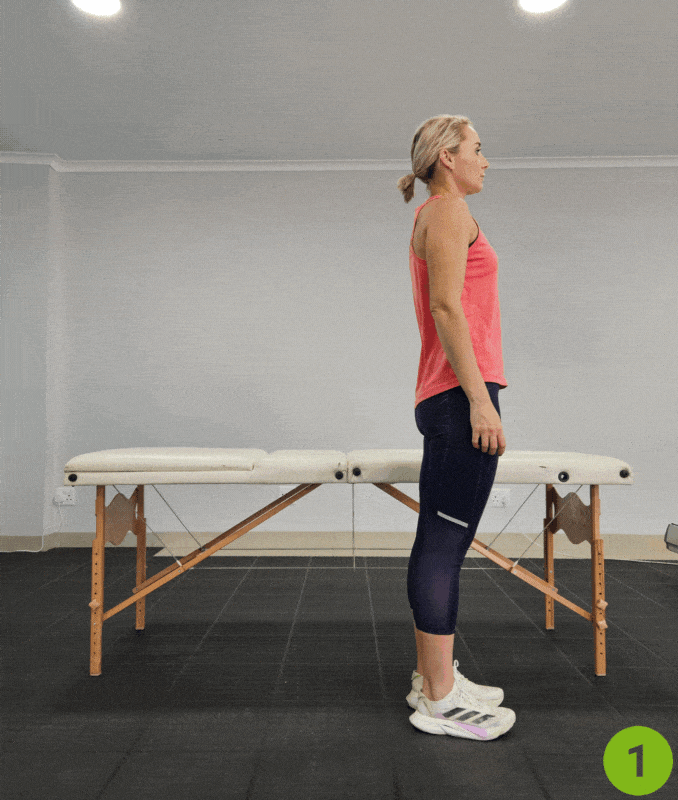
- Begin in an upright standing position.
- Then, take one big step back with one leg.
- Lower your back knee to the ground, and then extend your arms overhead, taking deep breaths.
- Moreover, hold this position for 20 seconds, and then slowly return back to the starting position and repeat the movement on the opposite side.
8. Prone Leg Back

- Lie on your stomach, relaxing the upper body, neck, and shoulders.
- Then, rest your forehead on your hands so your body is in a good, straight position.
- Tighten the abdominal area. Lift one thigh off the floor, hold briefly, then lower it back down while maintaining abdominal engagement.
- Moreover, repeat movement on the opposite leg.
Conclusion
In conclusion, stretching the psoas muscle regularly is essential for maintaining flexibility, reducing muscle tightness, and improving overall mobility. Additionally, given its critical role in posture and movement, particularly as we age, incorporating stretches like the hip flexor stretch, pigeon pose, psoas release stretch, and bridge pose can help alleviate tension in the psoas and support better spinal health.
Furthermore, by keeping the psoas muscle relaxed and engaged, you can prevent discomfort, improve posture, and enhance recovery, making these stretches a valuable addition to your routine for long-term health and well-being.
If you want to instantly release your hip flexors for more strength, better health and all day energy, then check out the Unlock Your Hip Flexors program, here!
Frequently Asked Questions
What is the fastest way to release the psoas?
The fastest way to release the psoas muscle is by doing a psoas stretch. One effective method is to perform a lunge stretch, where you step one foot forward and lower the back knee to the ground while keeping the hips aligned. Moreover, this helps gently stretch the tight psoas muscle and relieve some of the tension. Other methods, like using a foam roller or gentle yoga poses, can also help with psoas muscle tightness, especially in the lumbar spine area.
What are the symptoms of a tight psoas?
When the psoas muscle becomes tight, you might feel discomfort or pain in the lower lumbar spine, the hips, or the pelvis. Some common symptoms of psoas muscle tightness include:
- Lower back pain, especially in the lumbar spine area.
- Difficulty with deep bending or twisting motions.
- Pain when standing up after sitting for a long time.
- A feeling of tightness in the hips or groin.
How do you release a trigger point in the psoas?
To release a trigger point in the psoas, you can apply gentle pressure to the area. Here’s one way to do it:
- Lie on your back and place a tennis ball or a massage ball under your lower back, near the lower lumbar spine.
- Slowly move your body to apply pressure on the ball, targeting the tight psoas muscle.
- You can also use deep breathing to help relax the muscle as you apply the pressure. Alternatively, doing a psoas stretch or practicing specific yoga poses may help release trigger points and reduce muscle tightness.
What position relaxes the psoas?
The psoas muscle relaxes when the hip is in extension. One effective position to relax the psoas is lying on your stomach or back with the hip extended to gently lengthen the muscle. This position helps to gently stretch and relieve tension in the tight psoas muscle. You can also try the psoas stretch or a gentle backbend to open up the hips and stretch the lower lumbar spine, promoting relaxation in the psoas.


